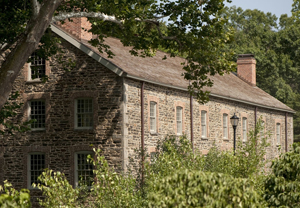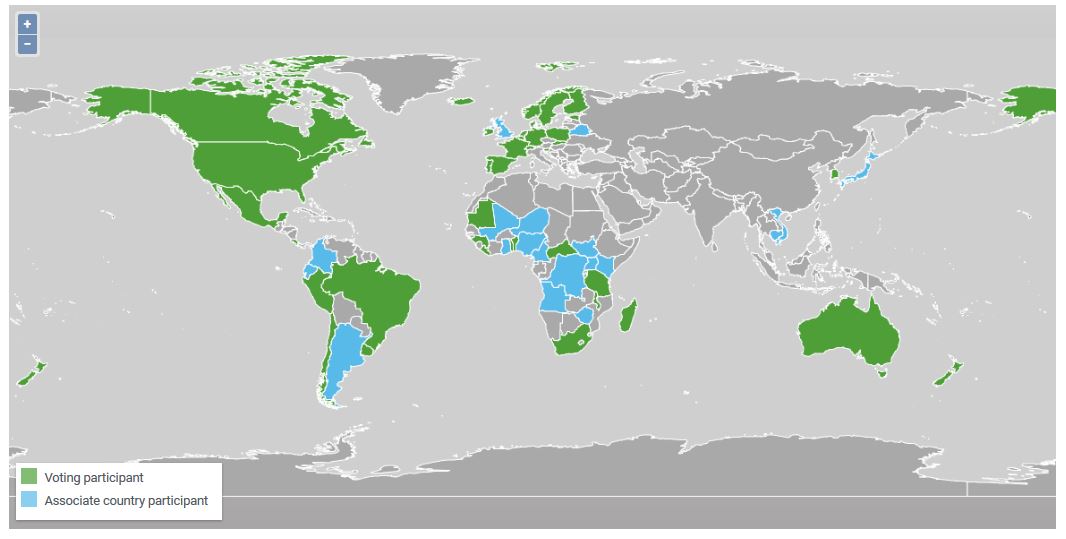|
Swartzia Rediviva
''Swartzia rediviva'' is a species of flowering plant in the family Fabaceae. It is found only in Suriname Suriname (; srn, Sranankondre or ), officially the Republic of Suriname ( nl, Republiek Suriname , srn, Ripolik fu Sranan), is a country on the northeastern Atlantic coast of South America. It is bordered by the Atlantic Ocean to the north .... Description It was first described by Richard Sumner Cowan in 1973. The first description is based on a specimen collected near the banks of the left Coppename River. Publication of this description was accelerated ahead of a set of the publication other taxa descriptions, to facilitate its inclusion into the imminent release of the book ''Flora of Suriname''. Range This species is said to be only found in Suriname. GBIF, which is an aggregation service of observational data on species, has no observations so far.Swartzia rediviva R.S.Cowan in GBIF Secretariat (2019). GBIF Backbone Taxonomy. Checklist dataset https:/ ... [...More Info...] [...Related Items...] OR: [Wikipedia] [Google] [Baidu] |
The New York Botanical Garden
The New York Botanical Garden (NYBG) is a botanical garden at Bronx Park in the Bronx, New York City. Established in 1891, it is located on a site that contains a landscape with over one million living plants; the Enid A. Haupt Conservatory, a greenhouse containing several habitats; and the LuEsther T. Mertz Library, which contains one of the world's largest collections of botany-related texts. , over a million people visit the New York Botanical Garden annually. NYBG is also a major educational institution, teaching visitors about plant science, ecology, and healthful eating through NYBG's interactive programming. Nearly 90,000 of the annual visitors are children from underserved neighboring communities. An additional 3,000 are teachers from New York City's public school system participating in professional development programs that train them to teach science courses at all grade levels. NYBG operates one of the world's largest plant research and conservation programs. N ... [...More Info...] [...Related Items...] OR: [Wikipedia] [Google] [Baidu] |
Richard Sumner Cowan
Richard Sumner Cowan (January 23, 1921 – November 17, 1997) was an American botanist. Early life Richard Sumner Cowan was born on January 23, 1921, in Crawfordsville, Indiana. His family moved to Florida and he was educated in the Tampa, Florida area. He returned to his birthplace in Indiana in 1938, and married Mary Frances Minnich in June 1941. In 1942 he received an AB degree from Wabash College. He joined the US Navy in 1943 and was deployed to the Pacific as a Seabee. While serving in the US Navy, he collected plants on Tinian Island, despite the danger of being shot. He earned his master's degree at the University of Hawaii in 1948, and then got a job at New York Botanical Garden. He joined two expeditions to Venezuela in search of tepuis. The first trip was 5 months long, beginning in October 1950. He completed his PhD in 1952 at Columbia University, after which he continued to work at the Botanical Garden. Richard went back to South America to gather some species in Am ... [...More Info...] [...Related Items...] OR: [Wikipedia] [Google] [Baidu] |
Flowering Plant
Flowering plants are plants that bear flowers and fruits, and form the clade Angiospermae (), commonly called angiosperms. They include all forbs (flowering plants without a woody stem), grasses and grass-like plants, a vast majority of broad-leaved trees, shrubs and vines, and most aquatic plants. The term "angiosperm" is derived from the Greek words ἀγγεῖον / ('container, vessel') and σπέρμα / ('seed'), meaning that the seeds are enclosed within a fruit. They are by far the most diverse group of land plants with 64 orders, 416 families, approximately 13,000 known genera and 300,000 known species. Angiosperms were formerly called Magnoliophyta (). Angiosperms are distinguished from the other seed-producing plants, the gymnosperms, by having flowers, xylem consisting of vessel elements instead of tracheids, endosperm within their seeds, and fruits that completely envelop the seeds. The ancestors of flowering plants diverged from the common ance ... [...More Info...] [...Related Items...] OR: [Wikipedia] [Google] [Baidu] |
Fabaceae
The Fabaceae or Leguminosae,International Code of Nomenclature for algae, fungi, and plants. Article 18.5 states: "The following names, of long usage, are treated as validly published: ....Leguminosae (nom. alt.: Fabaceae; type: Faba Mill. Vicia L.; ... When the Papilionaceae are regarded as a family distinct from the remainder of the Leguminosae, the name Papilionaceae is conserved against Leguminosae." English pronunciations are as follows: , and . commonly known as the legume, pea, or bean family, are a large and agriculturally important family of [...More Info...] [...Related Items...] OR: [Wikipedia] [Google] [Baidu] |
Suriname
Suriname (; srn, Sranankondre or ), officially the Republic of Suriname ( nl, Republiek Suriname , srn, Ripolik fu Sranan), is a country on the northeastern Atlantic coast of South America. It is bordered by the Atlantic Ocean to the north, French Guiana to the east, Guyana to the west, and Brazil to the south. At just under , it is the smallest sovereign state in South America. It has a population of approximately , dominated by descendants from the slaves and labourers brought in from Africa and Asia by the Dutch Empire and Republic. Most of the people live by the country's (north) coast, in and around its capital and largest city, Paramaribo. It is also one of the least densely populated countries on Earth. Situated slightly north of the equator, Suriname is a tropical country dominated by rainforests. Its extensive tree cover is vital to the country's efforts to mitigate climate change and maintain carbon negativity. A developing country with a relatively high ... [...More Info...] [...Related Items...] OR: [Wikipedia] [Google] [Baidu] |
Coppename
The Coppename is a river in Suriname (South America) in the district of Sipaliwini, forming part of the boundary between the districts of Coronie and Saramacca. Course The Coppename river begins in the Wilhelmina Mountains. Its tributaries are the Right Coppename (which originates on the northeast slope of the Wilhelmina range, Tafelberg, and the western parts of the Emmaketen), the Left Coppename, and the middle Coppename, which has its sources in the western and central parts of the north side of the Wilhelmina mountains and from the south east region of the Bakhuys Mountains. The three branches of the Coppename unite above the Tonckens Falls and then flows past Hebiweri Mountain. Below the Sidonkrutu-rapids it joins with the Adampada, which drains most of the eastern slope of the Bakhuys range. Below the Langa rapids, the river bends to the east and above the Raleigh Falls is joined by the Tangimama, which rises in the northern foothills of the Emmaketen. The Raleigh Fa ... [...More Info...] [...Related Items...] OR: [Wikipedia] [Google] [Baidu] |
GBIF
The Global Biodiversity Information Facility (GBIF) is an international organisation that focuses on making scientific data on biodiversity available via the Internet using web services. The data are provided by many institutions from around the world; GBIF's information architecture makes these data accessible and searchable through a single portal. Data available through the GBIF portal are primarily distribution data on plants, animals, fungi, and microbes for the world, and scientific names data. The mission of the GBIF is to facilitate free and open access to biodiversity data worldwide to underpin sustainable development. Priorities, with an emphasis on promoting participation and working through partners, include mobilising biodiversity data, developing protocols and standards to ensure scientific integrity and interoperability, building an informatics architecture to allow the interlinking of diverse data types from disparate sources, promoting capacity building and ca ... [...More Info...] [...Related Items...] OR: [Wikipedia] [Google] [Baidu] |
Swartzia
''Swartzia'' is a genus of flowering plants in the family Fabaceae. It was named in honor of Swedish botanist Olof Swartz and contains about 200 species. ''Swartzia'' is restricted in its geographical distribution to the New World Tropics, where it occurs primarily in lowland rainforests, but also in savannas, pre-montane forests, and tropical dry forests. While it can be found throughout the wet lowlands from Mexico and the Caribbean islands to southern Brazil and Bolivia, ''Swartzia'' is most abundant and species-rich in Amazonia, where 10–20 species may co-occur at a single site. The species of ''Swartzia'' are mostly trees, ranging from small understory treelets to large canopy emergents. Some species, especially in savannas, are mult-stemmed shrubs. Fossil record Many ''Swartzia'' fossils from the middle Eocene epoch are known from the United States. 5 fossil dehiscent seed pods and 50 fossil leaflets have been described from the Warman and Lawrence clay pits in Weakley ... [...More Info...] [...Related Items...] OR: [Wikipedia] [Google] [Baidu] |
Flora Of Suriname
Biodiversity in Suriname is high, mostly because of the variety of habitats and the temperature. The average annual temperature in the coastal area is between 26° and 28° Celsius. Suriname can be divided into four major ecological zones, namely from north to south; # The young coastal plain # The old coastal plain # The Savannah or Zanderij belt # The interior residual uplands. Habitats and species The coast of Suriname is wild and consists of mud banks, sand beaches, mangrove forests and lagoons. The Guiana current flows along the coast of Suriname. The North Brazil Current, a warm water ocean current, is renamed as the Guiana current. The confusion surrounding its name is due partly to the seasonal change in flow of nearby currents. The mangrove forests have only one story with a height of 20–25 meters. They are almost completely homogenous and dominated by black mangrove (''Avicenna germinans''). The mangrove forests are important as staging and wintering areas for birds, ... [...More Info...] [...Related Items...] OR: [Wikipedia] [Google] [Baidu] |
Vulnerable Plants
Vulnerable may refer to: General * Vulnerability *Vulnerability (computing) * Vulnerable adult *Vulnerable species Music Albums * ''Vulnerable'' (Marvin Gaye album), 1997 * ''Vulnerable'' (Tricky album), 2003 * ''Vulnerable'' (The Used album), 2012 Songs * "Vulnerable" (Roxette song), 1994 * "Vulnerable" (Selena Gomez song), 2020 * "Vulnerable", a song by Secondhand Serenade from '' Awake'', 2007 * "Vulnerable", a song by Pet Shop Boys from ''Yes'', 2009 * "Vulnerable", a song by Tinashe from '' Black Water'', 2013 * "Vulnerability", a song by Operation Ivy from ''Energy'', 1989 Other uses * Climate change vulnerability, vulnerability to anthropogenic climate change In common usage, climate change describes global warming—the ongoing increase in global average temperature—and its effects on Earth's climate system. Climate change in a broader sense also includes previous long-term changes to ... used in discussion of society's response to climate change * ... [...More Info...] [...Related Items...] OR: [Wikipedia] [Google] [Baidu] |




_(3).jpg)